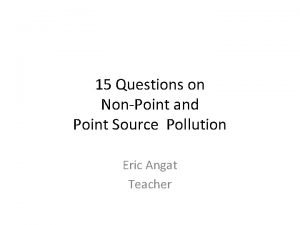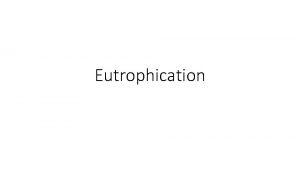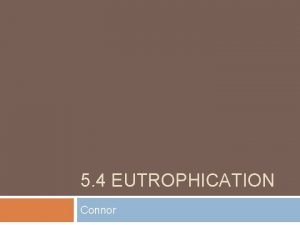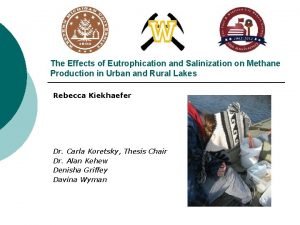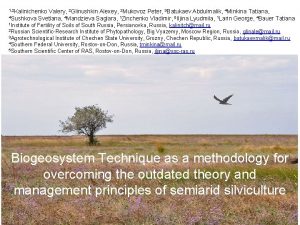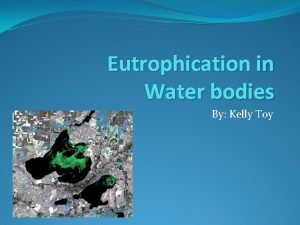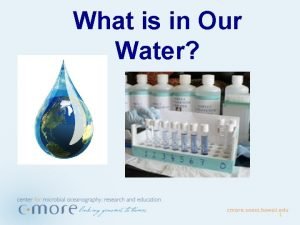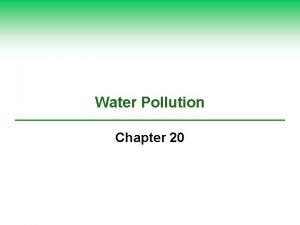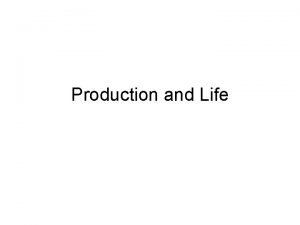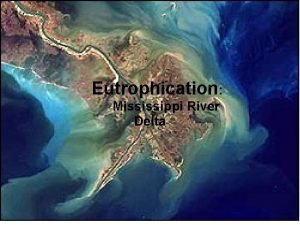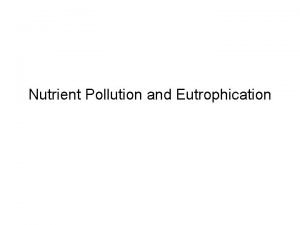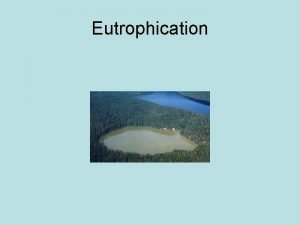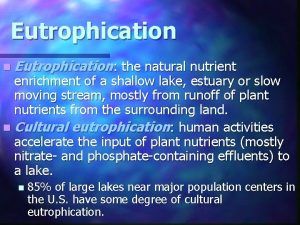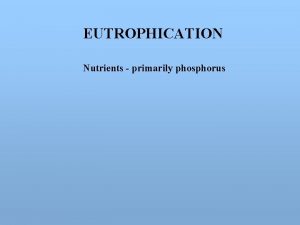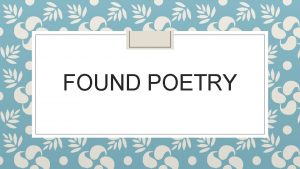Chemical Pollution Eutrophication Types of chemical pollution found









- Slides: 9

Chemical Pollution &Eutrophication

Types of chemical pollution found in bodies of water l Excess sewage and waste l Toxic Chemicals (ex: mercury/PCBs) l Fertilizers/Detergents l Any chemical that alters the chemical balance in the body of water

How do these pollutants enter the bodies of water? l Runoff of fertilizers from farms and homes. l Sewage backup from excessive rains. l Runoff of water from parking lots etc. that does not end up in sewage systems. l Pollution that comes from rainfall. Example: acid rain

Eutrophication l Process of increasing the amount of organic matter and nutrients in a lake or body of water. l This is a natural process that occurs over thousands to millions of years. l Sometimes eutrophication is referred to as aging of a lake.

What are eutrophic lakes like? l Abundant nutrients l Abundant life: algae, fish, and other animals. l Comparatively shallow l Lake Erie is the most eutrophic of the Great Lakes. It is the most biologically productive. More fish are caught in Erie than any of the others.

Sounds like Eutrophication is Good! l. A little eutrophication that occurs in nature is normal. But? ? l But too much of a good thing is bad!! Man-made or cultural eutrophication happens on a much faster and larger scale.

l In the 1960 s, Lake Erie was declared "dead, " though, ironically, it was full of life -- just not the right kind. Eutrophication had claimed Lake Erie and excessive algae became the dominant plant species, covering beaches in slimy moss and killing off native aquatic species by soaking up all of the oxygen.

What causes cultural eutrophication? l Fertilizers, detergents, and sewage are the types of chemical pollution that lead to cultural eutrophication. l These types of pollution have large amounts of phosphorus and nitrogen which lead to excessive algae growth.

Return to the Profundal l The excessive algae out compete most other phytoplankton and then die and go to the bottom. l Excessive decomposition and sedimentation leads to large amounts of cell respiration which uses up all the oxygen. l Literally, the excessive algae suffocates most of the rest of life in the lake.
